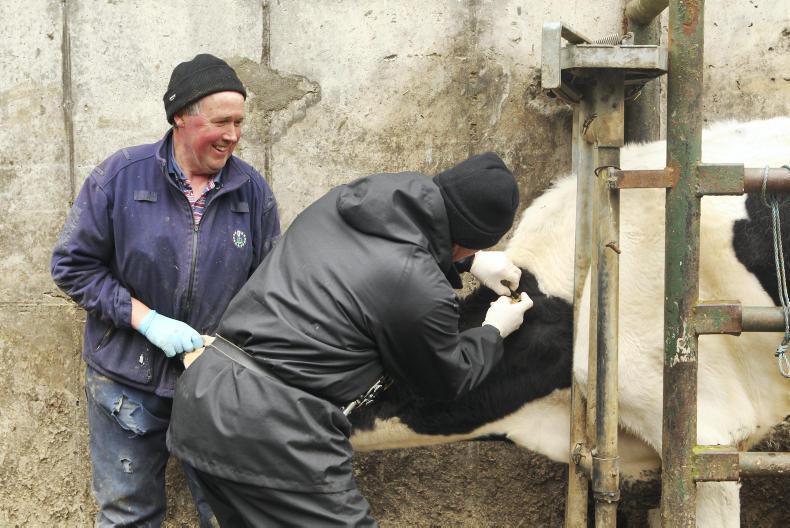When injecting cattle, careful consideration should be given to where best to insert the needle. Many farmers inject cattle in the hind quarter without any thought of how a dirty needle can affect the muscle below the skin.
When you have to inject cattle either to administer antibiotics or as a form of parasite control, following these five steps will ensure the animal and operator are safe and that best practice is carried out.
Step 1 – Handle cattle in a secure, purpose-built unit
Cattle should be handled in a secure unit as it restricts movement, ensuring the animal and operator are safe. The unit can be a permanent structure, or a purpose-made mobile unit with a secure head-locking gate.
Cattle that are not properly secured can move forward and backward. This can lead to a needle breaking, which is then difficult to recover. The operator can be injured also.
Step 2 – Pick the right size of needle
Using the correct size of needle is important to administer the injection properly. For adult cattle, when injecting into the muscle (intramuscular) use a 1.5in needle and a 1in needle when injecting adult cattle under the skin (subcutaneously). The gauge of the needle relates to thickness. The higher the gauge, the finer the needle. The gauge of the needle is important depending on how viscous (thick) the solution is. Lower-gauge needles are advisable for extremely viscous products and vice versa.
Step 3 – Select the correct injection point
Cattle, like humans, have a circulatory system which transports antibiotics around the body in the bloodstream. Therefore, injecting the animal in the neck is just as effective as injecting muscle in the hind quarter.
The neck area is usually cleaner than the hind quarter, helping to reduce contamination of the needle and injection site. Avoid injecting cattle in the loin or hind quarter as it can lead to scar tissue or abscesses on a high-value part of the carcase.
Step 4 – Subcutaneous or intramuscular
Some injections are given into the muscle (intramuscular) and some given under the skin (subcutaneous). Read the product guidelines to make sure you inject the product properly.
When injecting into the muscle, the best site is in the neck, just in front of the shoulder. When injecting under the skin, you should inject just behind the shoulder. Lift the skin and pull tight before inserting the needle.
Step 5 – Change the needle regularly
Needles should always be sterile to avoid contamination of the injection site or causing an abscess. A new needle should be used every time cattle are brought together for treatment. If you drop a needle, discard immediately and use a new needle.
Needles should be replaced regularly as they can quickly blunt on every use. Also, the more the needle is used, the greater the level of cross-contamination that will spread germs from animal to animal. Store needles in a safe container that prevents accidental injury and dispose of them safely.
